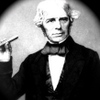|
Nevermind!
No. 9 fucked around with this message at 02:14 on Jun 28, 2010 |
|
|
|

|
| # ? May 28, 2024 18:03 |
|
So a friend of mine is selling his Firestudio 26x26 for 400 bucks. Hardly used. I have another friend who is interested in buying it. Just wondering if anyone here has had experience with it and if there are better alternatives for that price range.
|
|
|
|
What is it that you don't like about the mackie onyx pres?
|
|
|
|
I have a Alesis Multimix Firewire 12 and a Mbox2 USB. Is there a way I can record input from both at the same time in Logic studio?
|
|
|
|
RivensBitch posted:What is it that you don't like about the mackie onyx pres? I stopped looking at mixing boards awhile ago. This (Onyx 1640) looks to be very easy to set up and interface with a computer. If the pres are clean that's a lot of product for 1500 bucks. Is this something you own? Have a demo of anything recorded with it online?
|
|
|
|
Hogscraper posted:It's about using the style of metering that's used to calibrate the hardware. And the same type of metering that's on every console ever made and referenced in all of the good recording books. RMS can be pretty useful when mixing and especially mastering, but I don't see the advantage compared to peak ballistics when dealing with digital conversion. quote:In my opinion peak meters are only useful to check for clipping and not setting a solid level. quote:You're missing my argument that the TC Electronic pres sound really good. I haven't heard the Onyx, but I think the Octopre, for the money, doesn't sound that great. I'm with you on the quality thing personally. In between the units I mentioned and the Crane Song, Aphex has their 188 and their 1788. The 188 is a pretty significant step up from the <$1000 market and also 1u, but the preamps are probably worth the $160 or whatever they come out to per channel at retail for a whole bunch of really clean gain. The 1788 has tons of cool features you would never really need in a home studio, but it's still cheaper than the Crane Song and sounds really good so it's worth a mention. RivensBitch: what is up with these jitter specs on the konnekt24D? They are between 2 and 20 times better than what companies like RME publish for their interfaces and their published RMS jitter is in the realm of dedicated studio masterclocks that cost double what it does like a Lucid GenX192. That's kind of ridiculous isn't it?
|
|
|
|
Not RivensBitch but I can answer. Someone over on GearSlutz did some crazy test with the Konnekt units. The clock was pretty drat stable but not as stable as advertised. TC's numbers come after some kind of jitter correction that's built into the chip. The RME is definitely better in every way. I'm looking for but I can't find the exact thread.
|
|
|
|
@wixard Why would a manufacturer specify a maximum input value in dBu if they didn't have some ideal zero point for their ADC? A lot of those modern consoles with LED/LCD metering have VU ballistics (300 ms rise/fall time) making them a lot softer than a true peak meter. They even factor this ideal zero point into the meter. I know when you hit 0 on SSL and ProTools HD consoles and you transfer the same file into a PC to see it's true peak value it is much lower than 0 dBfs. Almost every manual for recording hardware in regards to setting signal level has said to record as close to 0 without clipping. What they don't explain is that when it comes time to mixdown you have exactly zero headroom left on the master bus. You have to pull every fader back almost 9-12 dB to get the signal back into a usable range. 24-bit recording has LOADS of usable headroom, but you have to make it yourself or use a meter that's calibrated for your own hardware. Edit: Here are the maximum input values for three different interfaces. Avid / DigiDesign Mbox2: Maximum Input +21 dBu PreSonus FireStudio: Maximum Input Level (Unity Gain, 1KHz @ 0.5% THD+N) +17 dBu TC Electronic Konnekt: Full Scale Input Level @ 0 dBFS +13 dBu To me that says, yeah... it'll work up to this point but it's works best at this point. Hogscraper fucked around with this message at 16:35 on Jun 17, 2010 |
|
|
|
wixard posted:RivensBitch: what is up with these jitter specs on the konnekt24D? They are between 2 and 20 times better than what companies like RME publish for their interfaces and their published RMS jitter is in the realm of dedicated studio masterclocks that cost double what it does like a Lucid GenX192. That's kind of ridiculous isn't it? As Hogscraper said, it's pretty good initial jitter but their specs come after they've corrected it with their "JET" technology, a process that has it's own dedicated microcontroller. Here's the AES paper explaining what "JET" is: http://www.tcelectronic.com/Media/frandsen_travis_2006_clean_clocks_tc%281%29.pdf#page=6 quote:To meet our performance and cost targets we have focused
|
|
|
|
Hogscraper posted:A lot of those modern consoles with LED/LCD metering have VU ballistics (300 ms rise/fall time) making them a lot softer than a true peak meter. They even factor this ideal zero point into the meter. I know when you hit 0 on SSL and ProTools HD consoles and you transfer the same file into a PC to see it's true peak value it is much lower than 0 dBfs. You can see this in action on a Digidesign Venue system where you can switch between RMS and peak ballistics. RMS ballistics looks totally unfamiliar if you're used to the input meters you see on most other reinforcement consoles and when I tech these consoles for engineers unfamiliar with them, if I leave them in RMS ballistics 90% of engineers will drive the inputs to clipping before they know what's going on. quote:Almost every manual for recording hardware in regards to setting signal level has said to record as close to 0 without clipping. What they don't explain is that when it comes time to mixdown you have exactly zero headroom left on the master bus. You have to pull every fader back almost 9-12 dB to get the signal back into a usable range. If you know you're going to end up with 50+ channels at mixdown, would you record closer to 0 dBu on your konnekt24D so that all the faders can live near 0? quote:Edit: Here are the maximum input values for three different interfaces. edit: I should probably point out this series of posts is a sound reinforcement guy nitpicking gain structure with a mastering guy so we're probably both right and wrong. If we just had a broadcast guy around this would be even more nerdy ChristsDickWorship fucked around with this message at 00:51 on Jun 18, 2010 |
|
|
|
RivensBitch posted:Here's the AES paper explaining what "JET" is: Errr thats just a phase locked loop circuit. As in, the same whats in pretty much every soundcard?
|
|
|
|
Did you actually read the paper?
|
|
|
|
I was skimming for sure because its very long but yes. I paid close attention to the section called '4. The New Technology' and whilst theres alot of jargon, I can't really see how JET anti-jitter is anything other than a dual stage PLL circuit + technobabble? What that paper does illustrate to me is that jitter is fundamentally an engineering problem for the people that engineer converters. Jitter has become this buzzword in the last few years amongst home recordists and the like but I don't think consumers like us really should think of or worry about poo poo like this. Even the worst converters produced in the past 10 years are in engineering terms miles ahead of anything available to the super pros of the late 80s. Its the same with folks who worry about cable capacitance and dither. Those are problems for gear designers not musicians. WanderingKid fucked around with this message at 11:00 on Jun 18, 2010 |
|
|
|
@wixard I just don't find it useful to "use all the bits" in a 24-bit world. Unless you're recording something crazy and quiet like bugs for a Planet Earth broadcast you're never going to miss the resolution. Even then you'd need the best mics and the quietest preamps ever. As long as your recording peaks somewhere, ANYWHERE, above -48 dBfs (or is it -24 dBfs) you're getting all the resolution you need for CD. I also refuse to believe that ADCs are perfect until clipping, but I must admit I've never done any test to prove it. I kind of want to record something that is repeatable in 1 dB increments until the ADC clips. Level match and flip phases to see if the louder one's null against the ideal 0 dBu. This fear of distortion comes from working with finicky analog gear. Which comes back to what WanderingKid just posted. The digital gear we have today, even the shittiest onboard AC97 chips, are better than what was around in the early digital days. Of course, they were still using excellent mics and preamps to make those records... but there were still some amazing records made on what we consider terrible gear today. Back then everyone was falling over themselves to use it because it was so much better than tape.
|
|
|
|
I used to mix only with software and its easy to run softsynths right up to the red line on a full scale dB meter. But as soon as I started getting hardware synths I could max out the volume on the synth and run the output into a balanced soundcard line in and I would get in the ballpark of -20 to -10dBFS. My Xpander is broken but I plugged it in yesterday and its pushing -12dB in FL Studio with the volume controls on the synth totally maxed out. I guess you can run it into the neutrik inputs on the front of the Konnekt 48 with the preamps but I never tried it. My Virus sounds shocking when you try to full scale red line it even though its designed to work at +4dBu. You can get loads of volume out of it by using feedback1 or 2 reverb and mixing in tonnes of wet signal but it just starts breaking up like its clipping bad even though its miles under the 0dB line in FL Studio's meters. FL Studio meters really suck though.
|
|
|
|
WanderingKid posted:I was skimming for sure because its very long but yes. I paid close attention to the section called '4. The New Technology' and whilst theres alot of jargon, I can't really see how JET anti-jitter is anything other than a dual stage PLL circuit + technobabble? It's a dual stage PLL that tests a lot better than the similarly priced competition. You're right that it's a lot of hype on the "new" technology, it isn't a new process, just a better one. And you're right the good converters of yesterday are very cheap and widely available today, but if we're going to debate current converters and who is trying to make improvements, then we have discussions like this.
|
|
|
|
What does everyone use for natural bass sounds? I've got dirty synth bass out the rear end, but I can't get a decent electric bass tone to save my life. Maybe I should buy an actual bass.
|
|
|
|
bunky posted:What does everyone use for natural bass sounds? I've got dirty synth bass out the rear end, but I can't get a decent electric bass tone to save my life. Maybe I should buy an actual bass. http://www.zzounds.com/item--SQU326702 http://www.youtube.com/watch?v=jvW-fn8m2WA This bass definitely benefits from a proper setup and my bassist replaced the stock bridge with a better one. It's a tone monster and we've been able to get a lot of different sounds out of it. Strings have a HUGE impact on the sound. If you're going for that soft 70s round sound you'll want to pick up a set of flatwound strings. If you want a brighter sound go with roundwounds. You can change the tone with what the strings are made of as well. Nickel strings are a bit warmer than stainless steel. If you want that bitey mid range for metal/punk/rock you'll def want to go with stainless steel strings.
|
|
|
|
bunky posted:What does everyone use for natural bass sounds? I've got dirty synth bass out the rear end, but I can't get a decent electric bass tone to save my life. Maybe I should buy an actual bass. Hogscraper's idea is better, but you could also use this: http://www.sweetwater.com/store/detail/Trilian/
|
|
|
|
Gorilla Salsa posted:Hogscraper's idea is better, but you could also use this: http://www.sweetwater.com/store/detail/Trilian/
|
|
|
|
bunky posted:Yeah, I looked at a demo of Trilian at Guitar Center the other day. I can tell that's really the sweet spot of bass VSTs right now, but I'm looking for a more affordable route at the moment.
|
|
|
|
Bass is such a fun instrument; don't deprive yourself of the real deal.
|
|
|
|
h_double posted:Bass is such a fun instrument; don't deprive yourself of the real deal.
|
|
|
|
So I never had really researched the difference between Mac and PC when it came to audio production, but those are some pretty strong arguments. I use REAPER, so it's cross platform, and now I'm looking at the possibility of getting a Mac Mini to use instead of my PC. My current setup is: Windows 7 64 bit 3GB DDR2 Ram 2.6GHz Pentium Dual Core M-Audio Fast Track Pro 160GB SATA HDD REAPER / Addictive Drums / Amplitube 2 I'd keep the same audio interface, and hard drive size isn't a big deal to me. How big of a step up would it be to switch to a new Mac Mini with: * 2.4GHz Intel Core 2 Duo * 2GB 1066MHz DDR3 SDRAM - 2x1GB * 320GB Serial ATA Drive for about $700 shipped? Would there really be a big difference? Does anyone use REAPER on Mac?
|
|
|
|
It's all a workflow preference, man. But I will say that most people who make the switch don't go back to using Windows. I was totally put off by Apple computers for the longest time because of cost but after using one for 3+ years it's not going to stop me from buying another one when I need to. I haven't used Reaper on the Mac but as long as your interface is tapping into the Core Audio engine I'm sure it'll be as rock solid as anything else on the Mac. Just make sure you get a hard drive for it that's 7200 RPM or faster. This is the single biggest bottleneck as far as track counts go. Hogscraper fucked around with this message at 23:28 on Jun 21, 2010 |
|
|
|
I'd really suggest 4GB of ram for music production, it's super cheap and if you start out with two 1GB sticks then it makes upgrading later a hard mental excercise ("but...but.. what do I do with these two sticks? Why isn't it a single 2GB stick? drat YOU STEVE JOBS!")
|
|
|
|
Don't fix what isn't broken, man.
|
|
|
|
Gorilla Salsa posted:Don't fix what isn't broken, man. This basically. I'm not arguing Macs aren't nice audio machines (they definitely make sense for more pro applications, and I might think seriously about a MBP when I eventually upgrade my audio laptop in a few years), but if you're happy with the stability and performance of your current rig, that same $700 would buy you a pretty nice interface, or some halfway decent monitors or a couple of good mics etc., all of which will contribute more to your sound than your choice of OS, especially for a platform-agnostic app like Reaper. RivensBitch posted:("but...but.. what do I do with these two sticks? Why isn't it a single 2GB stick? drat YOU STEVE JOBS!") Because modern memory architecture is multi-channel and often interleaved, which in a nutshell means that there's more bandwidth on the memory bus when you use more sticks of RAM. h_double fucked around with this message at 08:00 on Jun 22, 2010 |
|
|
|
Yeah, I'll second that. A Mac isn't going to make you sound any different at all. If you're not happy with the performance of your Windows PC and were looking to upgrade anyway a Mac is a great move. But if your system is already running how you like it... well then.
|
|
|
|
Illuminati by Nature posted:I have a Alesis Multimix Firewire 12 and a Mbox2 USB. Is there a way I can record input from both at the same time in Logic studio? Anyone?
|
|
|
|
Illuminati by Nature posted:Anyone?
|
|
|
|
Hogscraper posted:Yeah, I'll second that. A Mac isn't going to make you sound any different at all. If you're not happy with the performance of your Windows PC and were looking to upgrade anyway a Mac is a great move. But if your system is already running how you like it... well then. I agree with not fixing what ain't broke. If your current setup works fine, I'd save the cash and then save more. When your current setup breaks or you become truly unhappy with it you'll have more cash and can make a serious upgrade whether it's to a Mac or whatever else.
|
|
|
|
Have any of you had any firsthand experience with the M-AUDIO Fast Track Ultra USB? Specifically, how are the drivers? Can it run a decent amount of VST instances without dropouts at low latency? I am currently using an Audigy 2 which actually has fairly good ASIO drivers, but I am really hurting for lack of I/O as I am moving back towards a more hardware based studio (modular synth users unite!). If the M-AUDIO isn't a POS, I'd like to grab two and use one with my laptop as a Reaktor-based effects rack and the other on my PC for my recording interface. FireWire is out as neither of my machines have FireWire in so USB/PCI/PCIe/PCMCIA only.
|
|
|
|
Oldstench posted:PCI/PCIe/PCMCIA only. 99.9% odds that if you have a desktop you can take only PCI or PCIe and if you have a laptop you can take only PCMCIA. Can't comment on the Fast Track, sorry.
|
|
|
|
Isn't the fastrak the interface that everyone complains about the pres not having enough gain? Also aren't FireWire pci/PCMCIA cards super cheap?
|
|
|
|
I paid $20 for my PCI firewire card, I think PCIE and PCMCIA are more like $50-60. If you go firewire, make sure you get a firewire card with a TI chipset.
|
|
|
|
Col.Kiwi posted:You don't have all three of those available in the same machine, I'll guarantee that. Obviously. My post indicated that I have two machines, a desktop and a laptop, neither of which have FireWire, hence the list of available interface types. RivensBitch posted:Isn't the fastrak the interface that everyone complains about the pres not having enough gain? I thought it was the Pro that had all the complaints. Doesn't really matter to me though as I am not really doing any recording with a mic. Yeah, I guess I could grab a FireWire card. h_double posted:If you go firewire, make sure you get a firewire card with a TI chipset. Thanks for the advice. Oldstench fucked around with this message at 16:28 on Jun 23, 2010 |
|
|
|
Oldstench posted:My post indicated that I have two machines, a desktop and a laptop, neither of which have FireWire, hence the list of available interface types. I got a $20 PCIe firewire card with a TI chipset on ebay myself so they are out there. Of course there's no performance advantage though, just smaller form factor.
|
|
|
|
I've been using my quad core PC instead of the mac just for convenience sake (I don't have to pull out the MBP and hook everything up if I use the desktop PC), and let me tell you I'm about to start a "This is why you need a Mac" thread. Anyone know where I can find some freeware to record video of my desktop display and an ASIO audio input? I'll totally hook up a mic and demonstrate the crap I'm running into. The example from last night would be using a MIDI controller to adjust synth parameters with low latency. Watch as I pull the cutoff filter back *snap* *crackle* *pop*. Watch as I page through the automap mapping pages, not even adjusting parameters (pushes a single button that shouldn't send any data to Ableton) *POP-POP*. Or another great automap problem that's PC only, put the controller into Ableton Control mode, now adjust the level of a track with the mouse. *audio playback slows down as if it's a turntable being pitched down*.
|
|
|
|

|
| # ? May 28, 2024 18:03 |
|
Sorry man  My quad core PC can run ~20 tracks full of VSTs + effects all day long at 64 sample latency with zero problems and CPU load around 30-40% tops. My quad core PC can run ~20 tracks full of VSTs + effects all day long at 64 sample latency with zero problems and CPU load around 30-40% tops.For the record, WinXP + Live 7 (or Reaper) + Fireface 400 + Edirol PCR-500 controller. h_double fucked around with this message at 17:26 on Jun 23, 2010 |
|
|



















